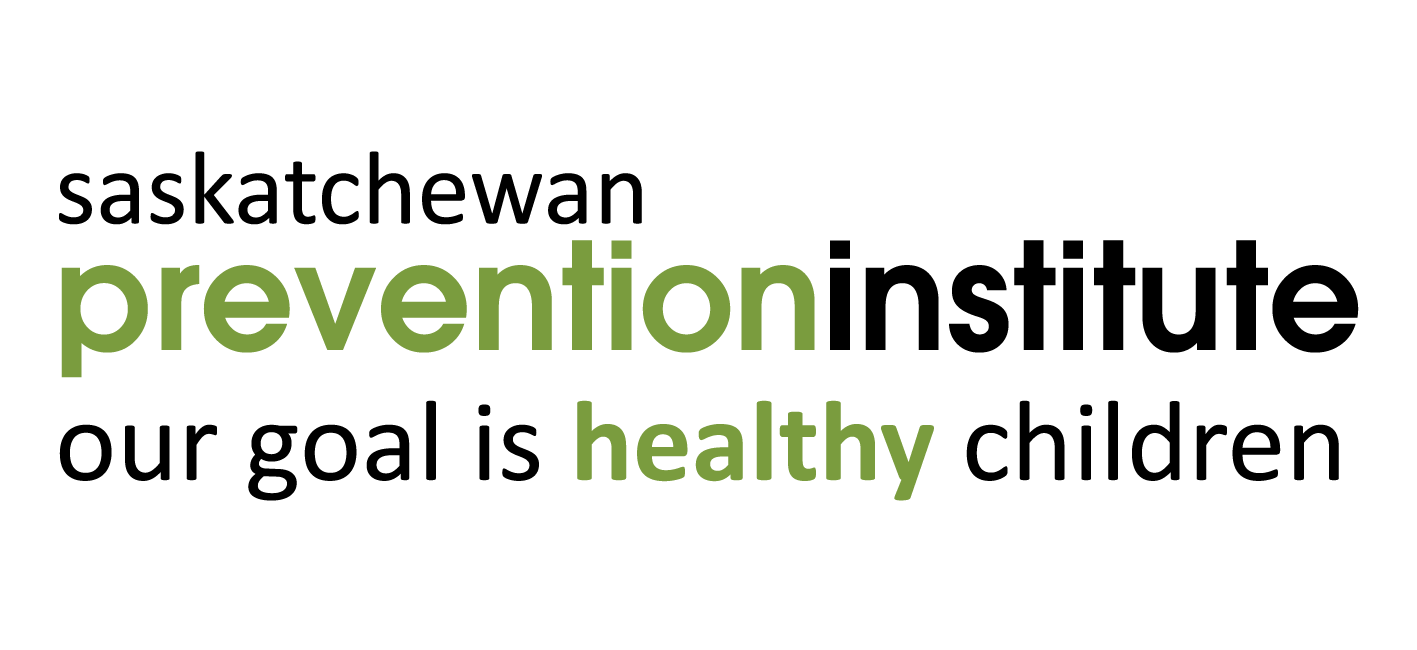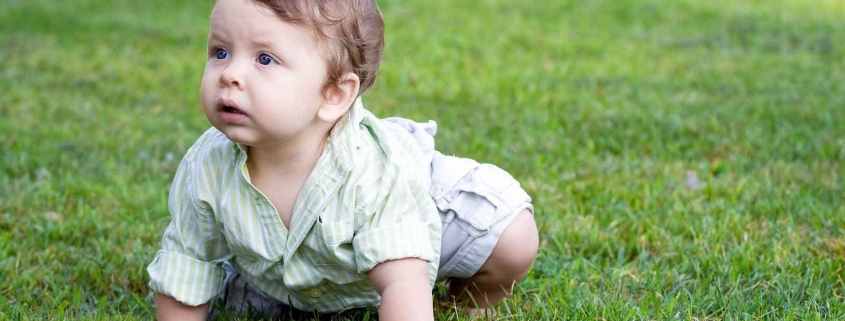
- Sort by Popularity (sales)
- Display 30 Products per page
-
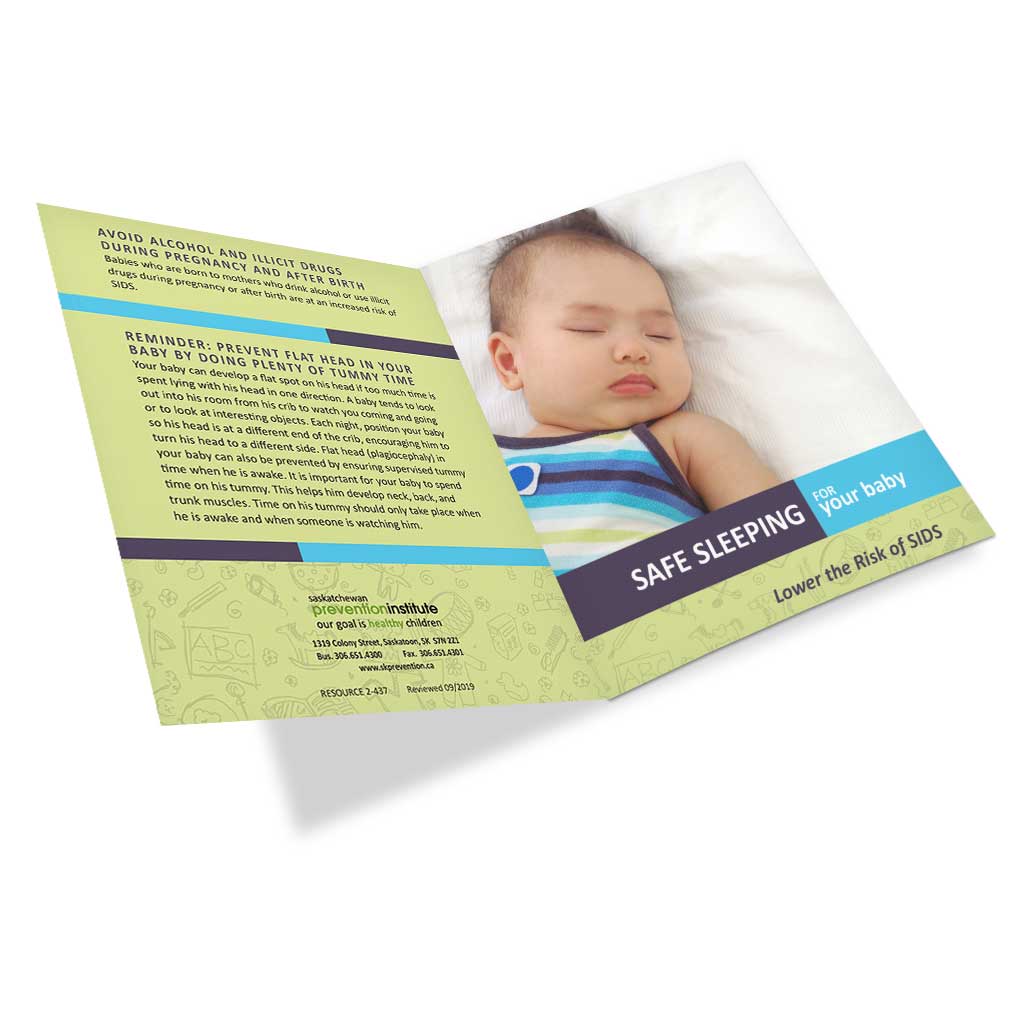
Safe Sleep for Your Baby: Lower the Risk of SIDS
Brochure, Revised 2019
This brochure outlines safe sleeping habits for babies to help reduce the risk of Sudden Infant Death Syndrome (SIDS). It also provides information on breastfeeding and the importance of supervised “tummy time”.
SKU: 2-437 -
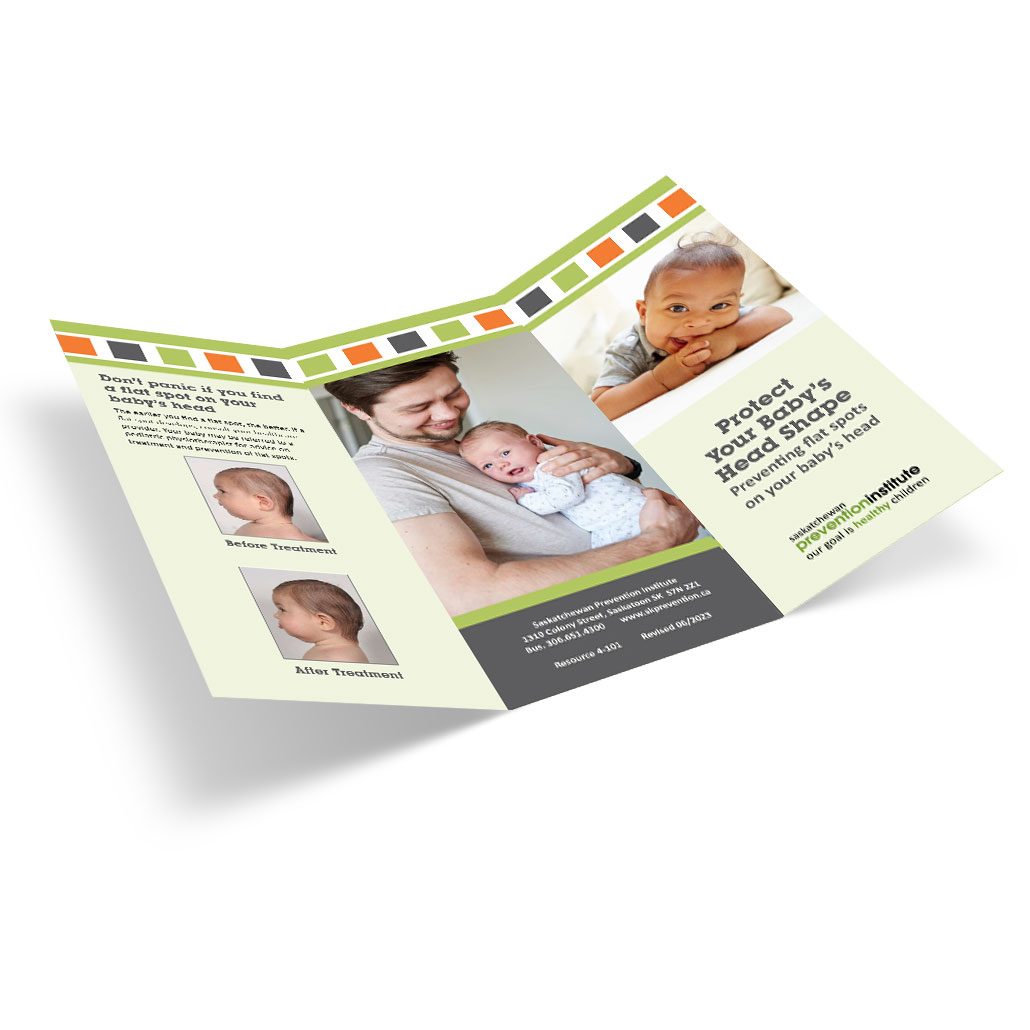
Protect Your Baby’s Head Shape: Preventing Flat Spots on Your Baby’s Head
Brochure, Revised 2023
This brochure provides parents and caregivers with information on positional plagiocephaly, or “flat head”. Information includes how to prevent flat spots and what to do if a flat spot is found on baby’s head.
SKU: 4-101 -
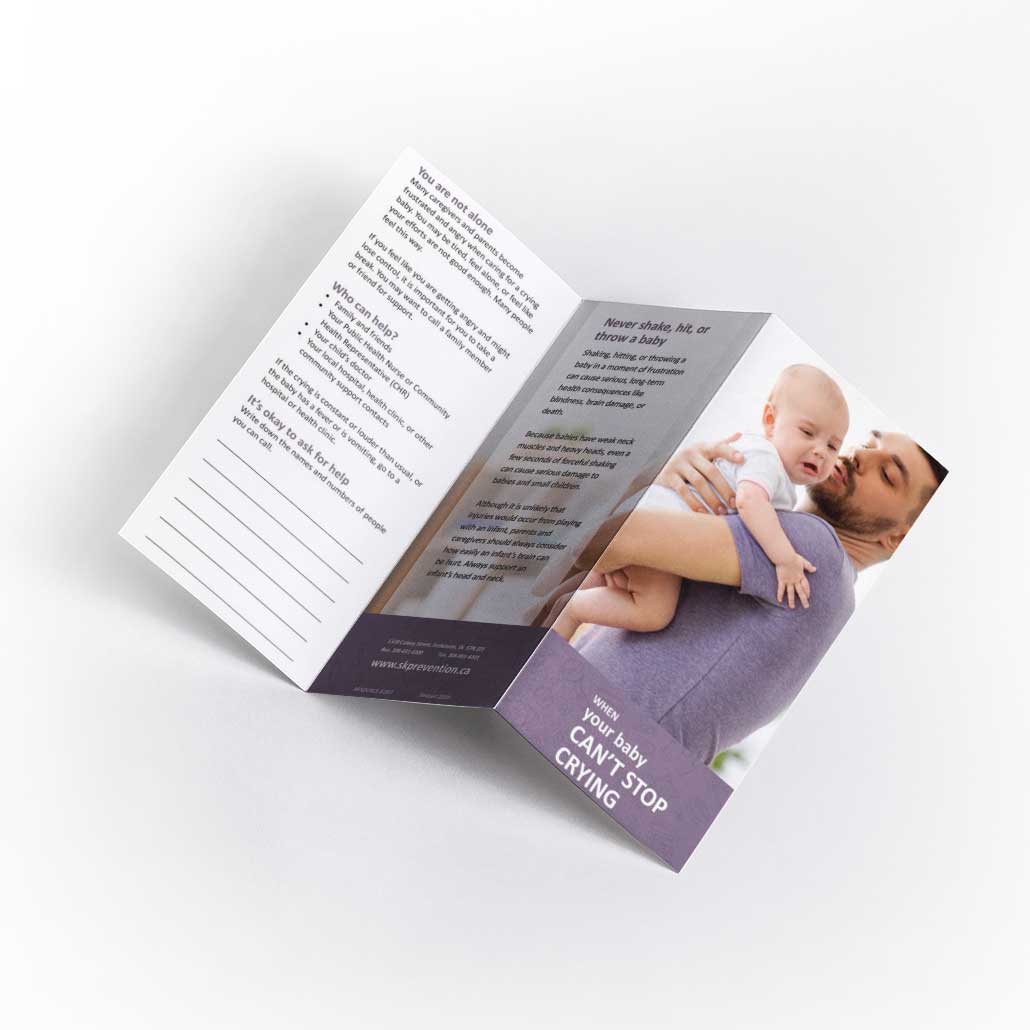
When Your Baby Can’t Stop Crying
Brochure, Revised 2019
Although infant crying is normal, it can be very frustrating for caregivers. This brochure identifies strategies for dealing with a crying infant, as well as strategies for handling caregivers’ frustration. Ideal for use with all caregivers. For information aimed at professionals and service providers, see Abusive Head Trauma (Shaken Baby Syndrome) (resource 4-900).
SKU: 4-902 -
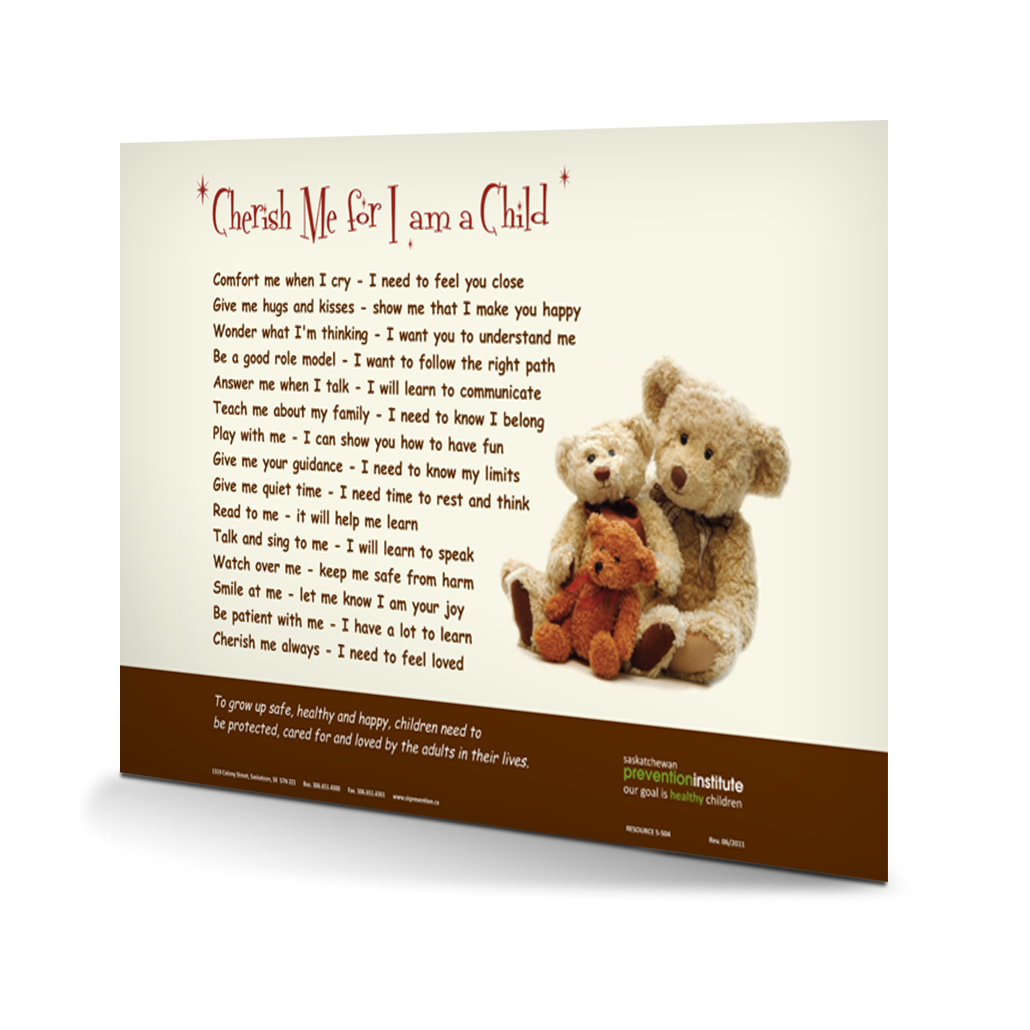
Cherish Me for I am a Child
Poster, 2011
This brightly coloured wall hanging with the poem “Cherish Me for I am a Child” talks about the importance of a child growing up feeling safe, secure, and happy and in order for a child to do this he needs to be protected, cared for, and loved by the adults in his life. This can be used as a wall hanging for anyone to have in their home or office.
SKU: 5-504 -
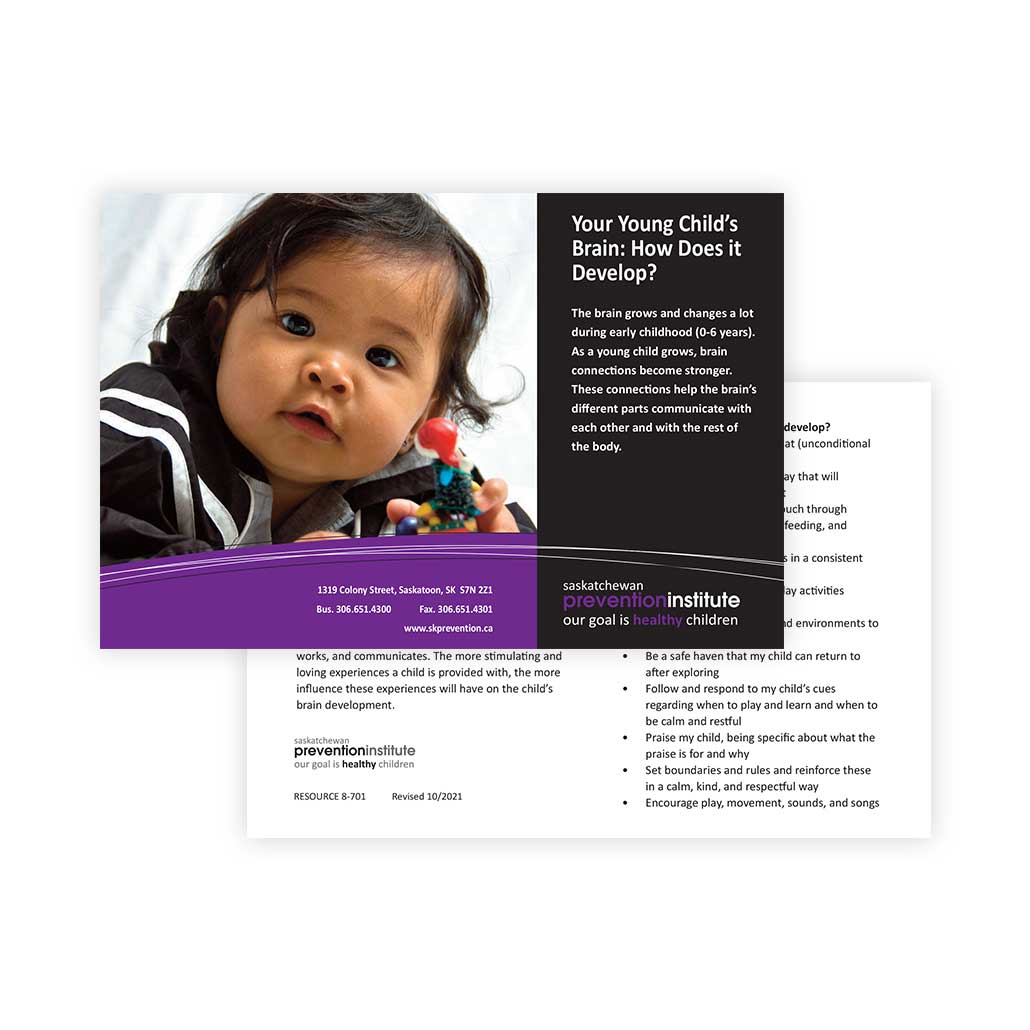
Your Young Child’s Brain: How Does It Develop?
Information Card, Revised 2021
Written in plain language, this information card provides basic information about the importance of brain development during the early years. Practical tips to increase opportunities for children’s healthy development are included.
SKU: 8-701 -
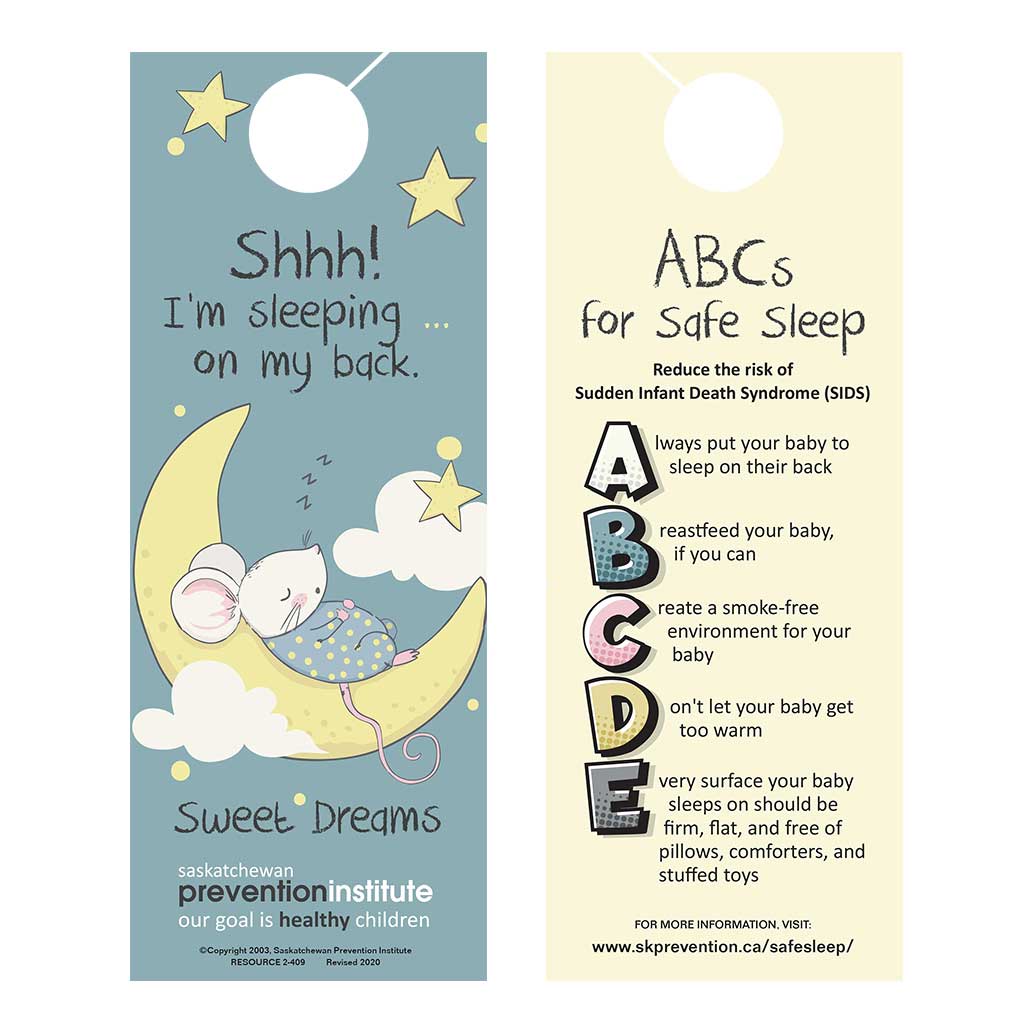
ABCs for Safe Sleep
Informational Door Hanger, 2020
This resource outlines safe sleeping tips for babies to help reduce the risk of Sudden Infant Death Syndrome (SIDS). It is intended to be used as a door hanger within a baby’s sleep environment.
SKU: 2-409 -
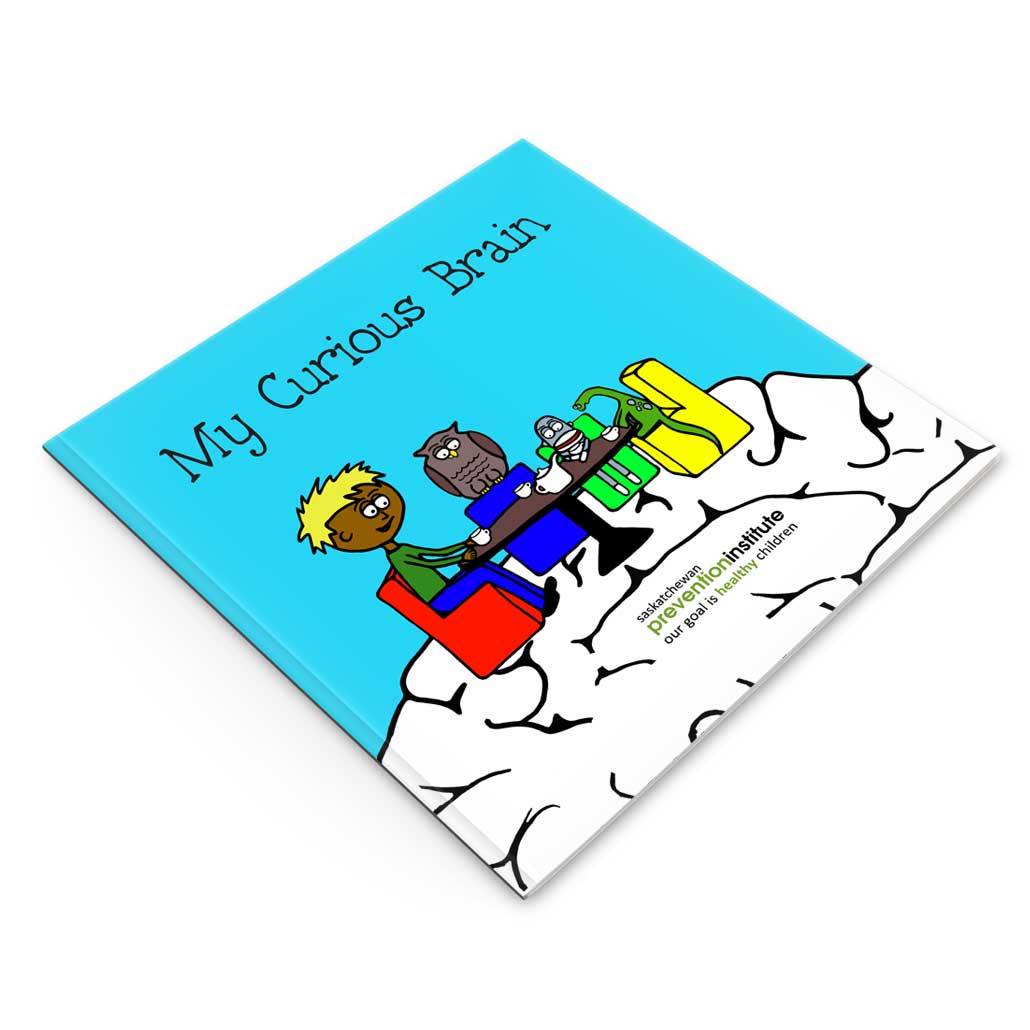
My Curious Brain
Booklet, 2019
My Curious Brain is a fun, interactive, and educational book for parents and caregivers to teach their kids about how the brain works. When parents and caregivers have a greater understanding of how the brain works, they will better understand how to support their child and promote healthy brain development. With a greater awareness of how the brain works and with supportive caregivers, children can develop self-regulation skills and strategies to help them effectively deal with stress.
SKU: 5-505 -

Attachment
Information Card, Revised 2020
Written in plain language, this information card provides basic information about attachment … the connection that a baby forms with his caregivers that helps him to feel loved, secure, and safe.
SKU: 8-801 -
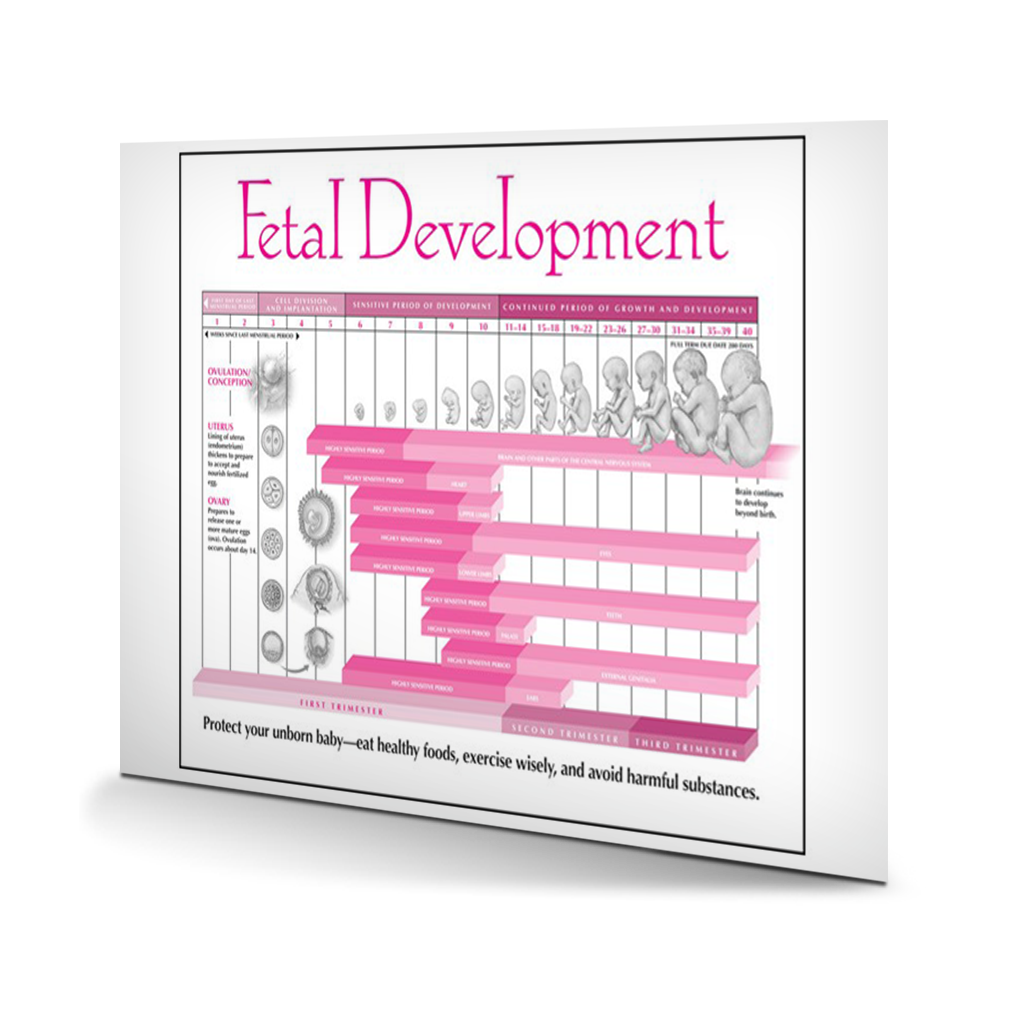
Fetal Development
Poster, 2008
These 8.5 x 11 inch posters, developed by Childbirth Graphics, assist healthcare professionals in discussing alcohol use with their patients. Although these posters do not focus on FASD, they can be used to help patients understand that alcohol is one of many factors which can impact the development of the fetus.
Audience: Healthcare Professionals and their PatientsSKU: 3-143 -

Temperament
Information Card, 2015
This information card is about temperament, the inherent and unique traits that influence how we interact with the world. Caregivers will be provided with information on why it is important to understand their children’s temperaments and how it affects behaviour.
SKU: 8-810 -
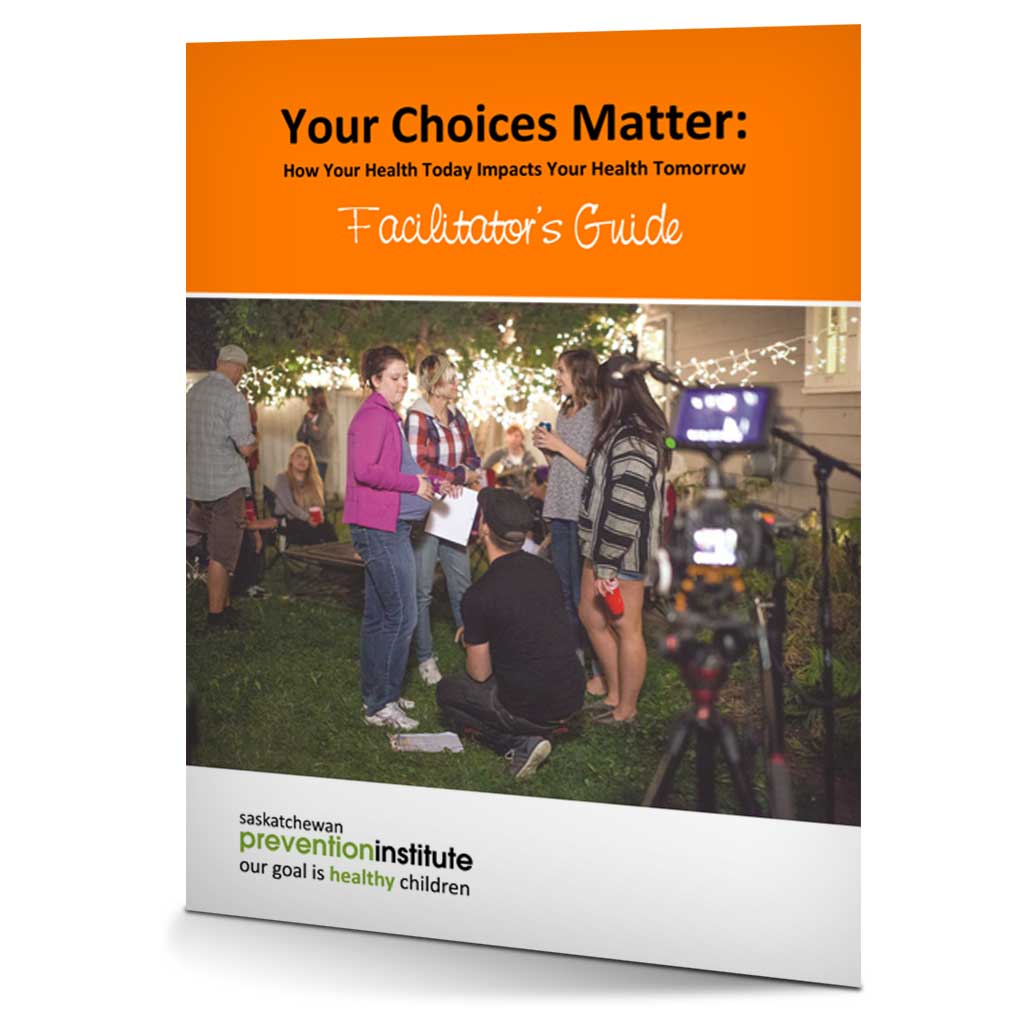
Your Choices Matter Facilitator’s Guide
Guide and Manual, Revised 2020
In conjunction with the Your Choices Matter Video, the Facilitator’s Guide can be used to engage youth and communities to have conversations about health and behaviour choices that they are making today to ensure the best health outcome for themselves and their future children. The guide provides background information and several lesson plans, which can be used in the classroom or in a group setting, to address the various topics introduced in the video.
While the Your Choices Matter Video is meant to introduce the topic of infant mortality and health behaviours, the lesson plans are a way to take this a step further. Each lesson addresses common risk factors for infant mortality and can help guide discussion about the impact of these risk factors for youth today and in the future, and for their future children. Each lesson has been linked to the Saskatchewan Curriculum and, where applicable, includes marking rubrics.
Download the Your Choices Matter Lesson PlansSKU: 2-120 -
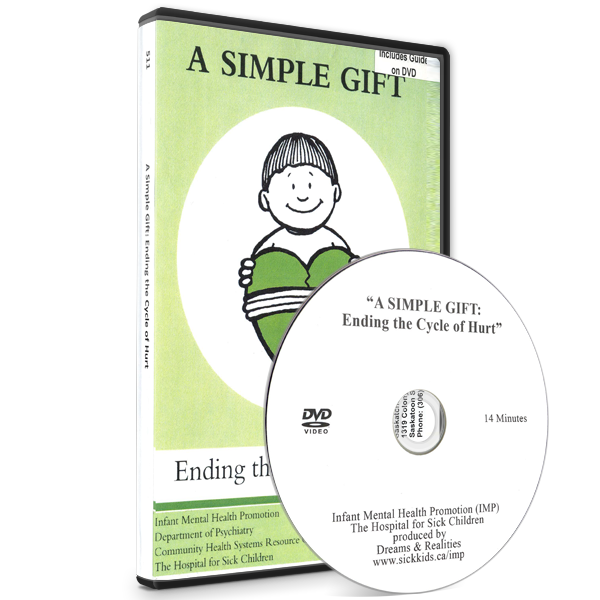
A Simple Gift: Ending the Cycle of Hurt
Video, 2000
Certain caregiver behaviours can be frightening to a young child and may contribute to disorganized attachment. As a result, serious emotional and behavioural problems can develop. This video is designed to help parents recognize and prevent interactions with their children that may be harmful. Simple examples of harmful caregiving behaviours are demonstrated with explanations of why they might frighten children. As well, more positive ways to interact with children are suggested. The information is presented in clear language and is suitable for parents from many cultures.
SKU: 5-V-511 -
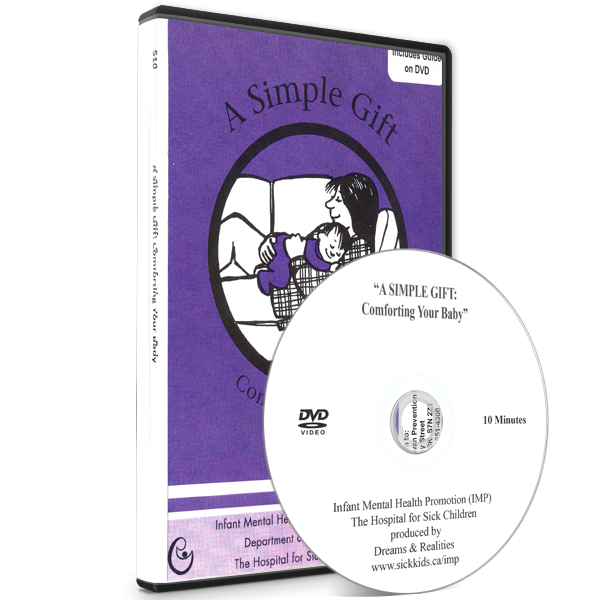
A Simple Gift: Comforting Your Baby
Video, 2000
This video addresses the development and importance of an infant’s attachment relationship with parents in the first year of life. It uses the ideas of attachment theory and research to help focus on different ways parents or other caregivers may respond to infants’ cries. It also shows how infants are likely to interpret the responses of caregivers. The information is presented in clear language and is suitable for parents from many cultures.
SKU: 5-V-510 -
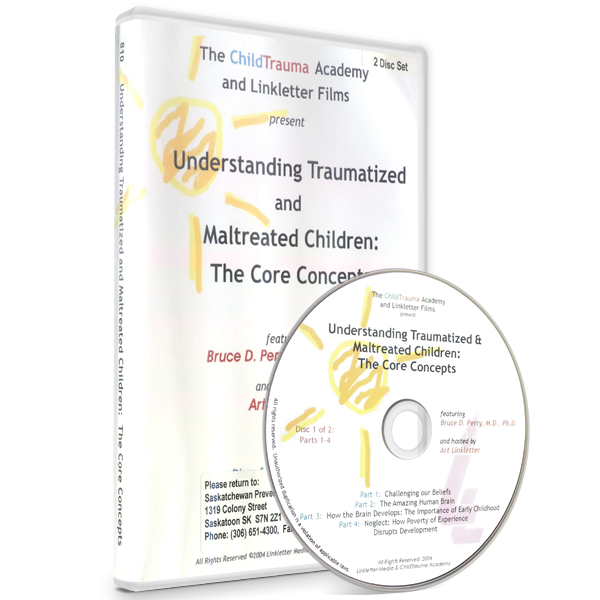
Understanding Traumatized and Maltreated Children: The Core Concepts
Video, 2004
This DVD consists of seven, half-hour presentations focused on child maltreatment and trauma. Dr. Bruce Perry, from the ChildTrauma Academy, presents information on the following topics:
- Challenging our beliefs
- The amazing human brain
- How the brain develops: The importance of early childhood development
- Neglect: How poverty of experience disrupts development
- The fear response: The impact of childhood trauma
- Living and working with traumatized children
- Violence and childhood
SKU: 8-V-810 -
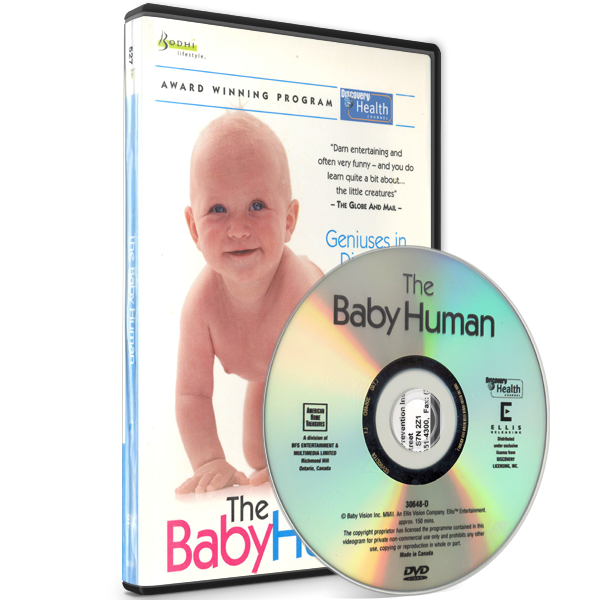
The Baby Human
Video, 2004
Imagine you’re suddenly thrust into a world where you can’t speak, can barely move, and must unravel the meaning behind a maze of sounds and sights in order to survive. This is the world of the baby.
For the first time, experience the first two years of a child’s life just as they do. This groundbreaking program reveals what only the little ones know. What is their most profound need? How do they REALLY see their parents? What does it feel like to struggle to walk or learn to speak?
It’s an incredible journey each of us has taken – but none of us remember. Get a carpet-and-crib-eye view of the baby’s world as they take their first humorous, death-defying, wondrous steps into life.
Episodes include: To Walk, To Think, and To Talk. Also includes segments on baby trivia, and common baby names and their meanings.
SKU: 5-V-527 -
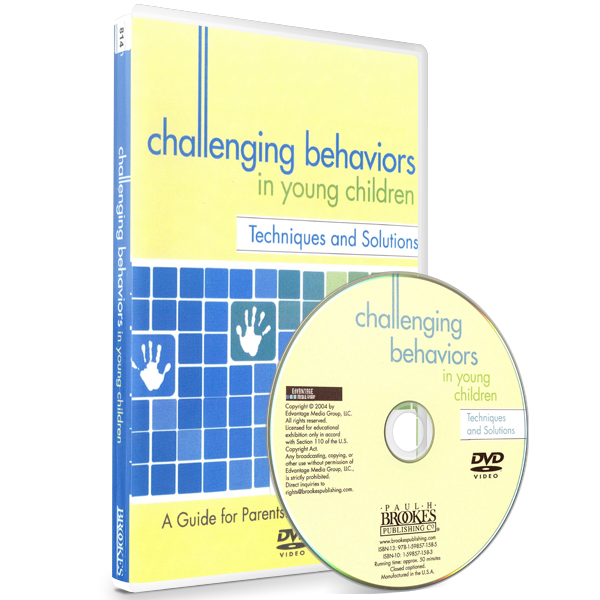
Challenging Behaviors in Young Children: Techniques and Solutions
Video, 2004
This DVD highlights expert information from two books Challenging Behaviors in Early Childhood Classroom Settings: Creating a Place for all Children and Addressing Challenging Behaviors in Early Childhood Settings: A Teacher’s Guide. The DVD uses footage from a daycare setting to highlight concepts that are introduced by experts throughout the film. Special attention is paid to methods that can be used to teach young children how to problem solve.
Audience: Parents and Early Childhood EducatorsSKU: 8-V-814 -
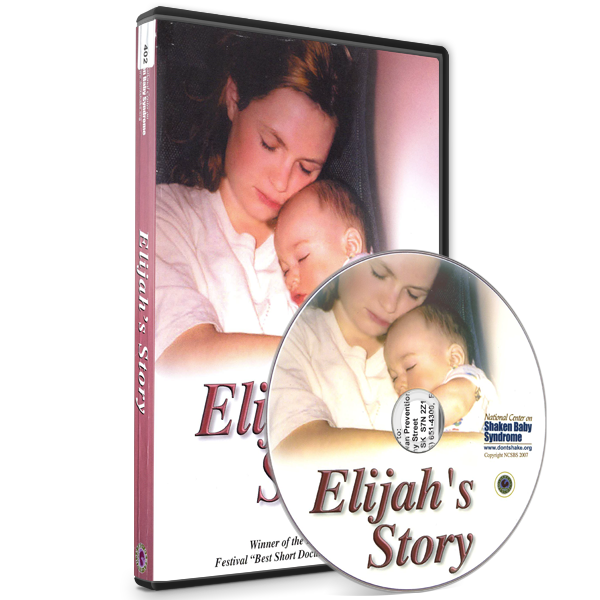
Elijah’s Story
Video, 2000
Elijah’s Story is the true story of a 16-month-old baby boy who was shaken to death by his biological father. The film follows the young family from the birth of Elijah to the 911 emergency call and sentencing hearing. Testimonies are given by Elijah’s mom and grandparents, as well as by the doctor, detective, and judge in the case. Elijah’s mom shares her emotions as she tries to go on, and Elijah’s dad speaks out from prison, encouraging others to learn from his mistakes.
SKU: 4-V-402 -
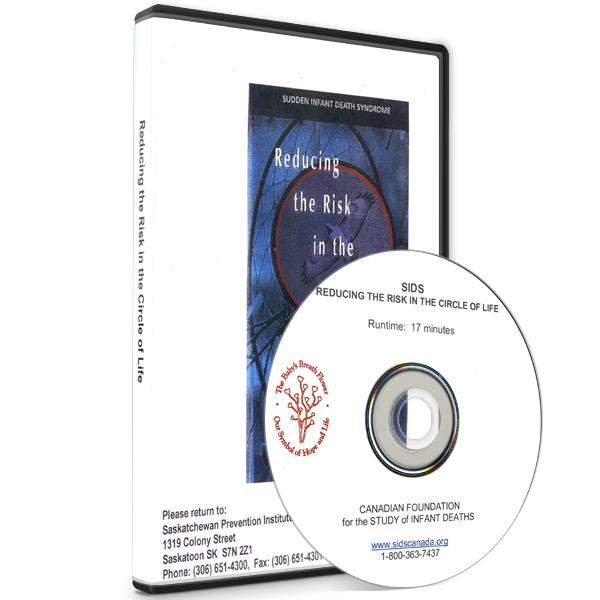
Sudden Infant Death Syndrome: Reducing the Risk in the Circle of Life
Video, 2000
Graham Greene narrates this video that describes strategies for reducing the occurrence of SIDS. Discussion of SIDS and the risk reduction strategies involve key interviews with Aboriginal parents, health professionals, and an Elder. The video is accompanied by a study guide, which can be used to lead group discussion. Audience: expectant parents, caregivers, health professionals.
Audience: Expectant parents, caregivers, and health professionals.SKU: 2-V-204 -
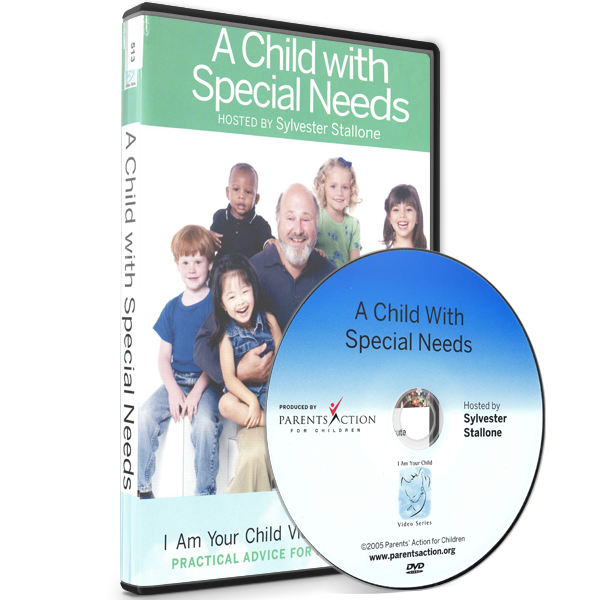
A Child with Special Needs (I Am Your Child Series)
Video, 2005
Finding out that your child has special needs is the beginning of a remarkable journey. Whether your child is developmentally delayed or has a significant physical disability, you want your child to be happy and safe, and to develop to her fullest potential.
In this video, families of children with special needs share their stories to help others in similar circumstances understand that, while every child is unique, there are common experiences, emotions, and challenges families are likely to encounter as they work to help their child.
This video provides information on:
- What to do when you find out that your child has a special need
- Moving from confusion and grief to acceptance and empowerment
- Finding answers and getting help
- Speaking up as your child’s best advocate
- The importance of looking beyond the diagnosis
- Focusing on your child’s unique strengths
SKU: 5-V-513 -
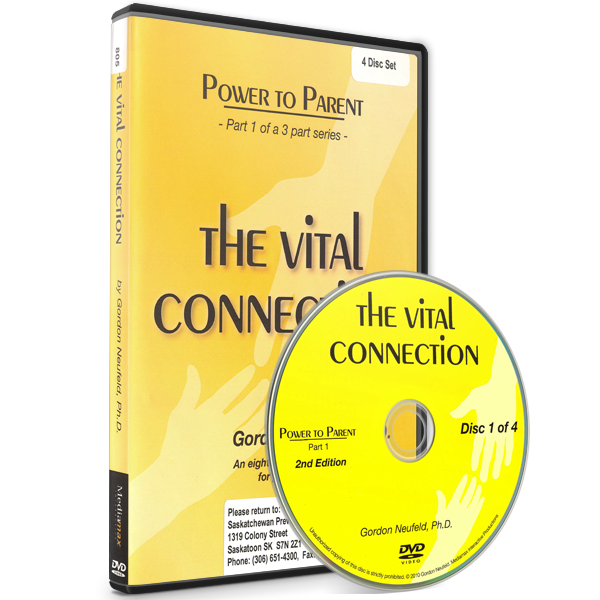
Power to Parent: The Vital Connection
Video, 2012
This is part 1 of a 3-part series. In this DVD, Dr. Neufeld examines the importance of the attachment relationship that children have with their caregivers and its continuance into adolescence. He discusses the difficulties that can occur if attachments to peers begin to compete with the attachment children have with their caregiver(s).
SKU: 8-V-805 -
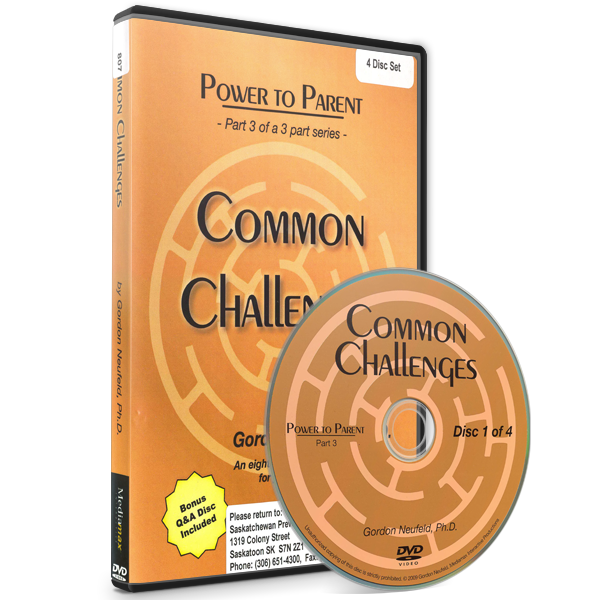
Power to Parent: Common Challenges
Video, 2011
Dr. Neufeld discusses ways to address challenging behaviour in children while maintaining attachment relationships. The eight sessions are as follows:
- Thinking developmentally when facing challenges
- Recognizing the signs of trouble
- Living with a sensitive child
- Cultivating resilience in a child
- Leading an alpha child
- Disciplining a stuck child
- Putting the developmental approach into practice
SKU: 8-V-807 -
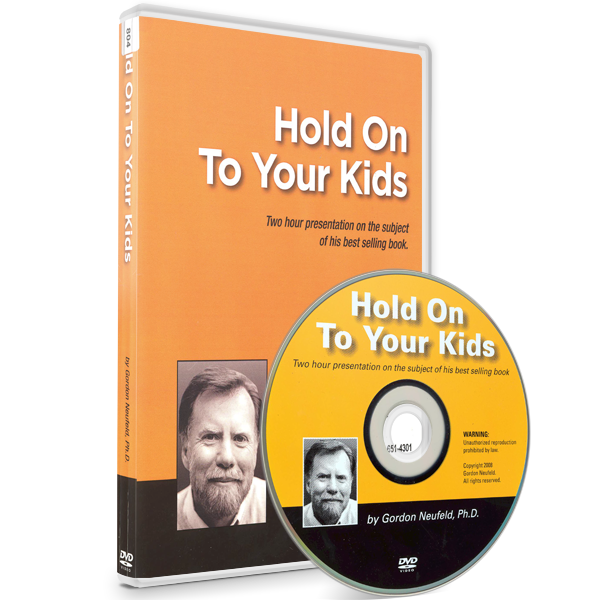
Hold onto Your Kids
Video, 2008
This DVD explores the importance of attachment in the development of children. In some cases, these relationships do not last for the length of time that children are still maturing. Often times, children turn their attachment relationship from caregivers to peers. However, peer relationships do not have the same benefits for the child as those with caregivers.
SKU: 8-V-804 -
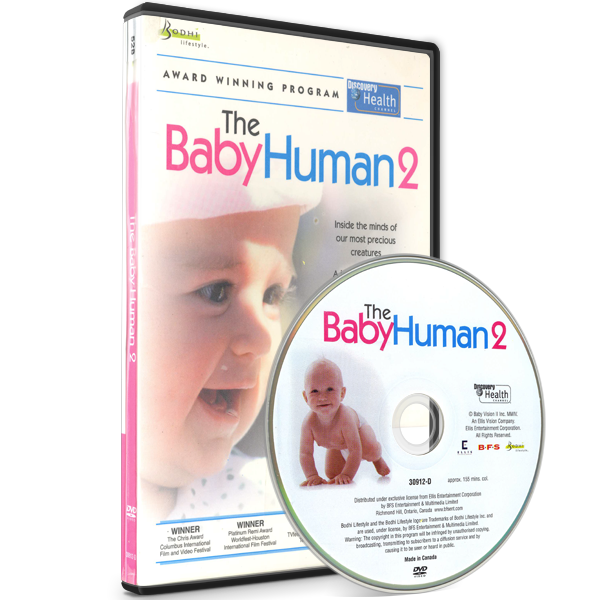
The Baby Human 2
Video, 2008
Imagine being thrust into a world where you cannot speak, can barely move, and must unravel the meaning behind a maze of sounds and sights in order to survive. This is the world of the baby.
Series Two of this groundbreaking program takes a look inside the mind of a baby, revealing how they think, communicate, and observe. Episodes include: To Feel, To Belong, and To Relate. Also includes segments on less common baby names and their meanings, and baby trivia.
SKU: 5-V-528 -
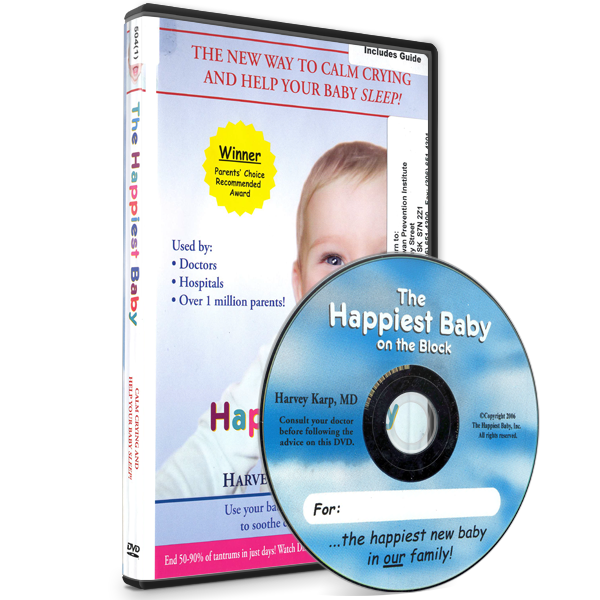
The Happiest Baby on the Block
Video, 2002
In this video, Dr. Karp teaches parents and caregivers how to calm and soothe a crying baby by using the “5 S’s”. The “Happiest Baby on the Block” is a positive parenting video and can also be used for the prevention of Shaken Baby Syndrome by teaching how to appropriately deal with infant crying.
SKU: 5-V-504 -
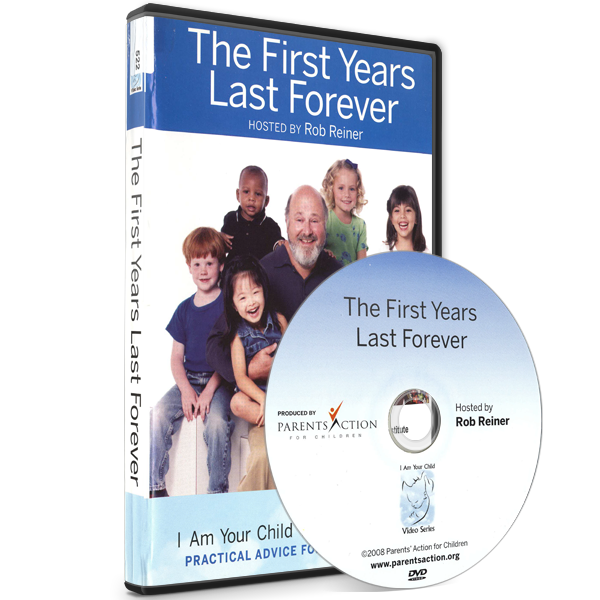
The First Years Last Forever (I Am Your Child Video Series)
Video, 2005
The new research in brain development tells us of the vital importance of the relationship between caregiver and child in the critical first years of life. New parents have a wonderful opportunity to help their child reach their full potential.
This video includes information on:
- Bonding and attachment
- Child care
- Communication
- Discipline
- Health and nutrition
- Self-esteem
- Self-awareness
SKU: 5-V-522 -
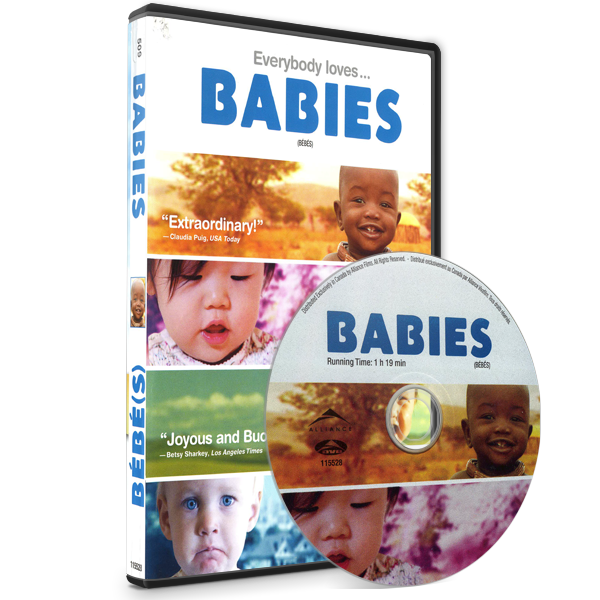
Babies
Video, 2009
Experience joy and happiness at its purest in this life-affirming, universal celebration of the magic and innocence of babies. Proving that if you surround your baby with love, it doesn’t matter what culture you’re from or what childrearing practices you follow. “Babies” travels the globe following four children from vastly different corners of the world – Ponijao from Namibia, Bayarjargal from Mongolia, Mari from Tokyo, and Hattie from San Francisco.
SKU: 5-V-509 -
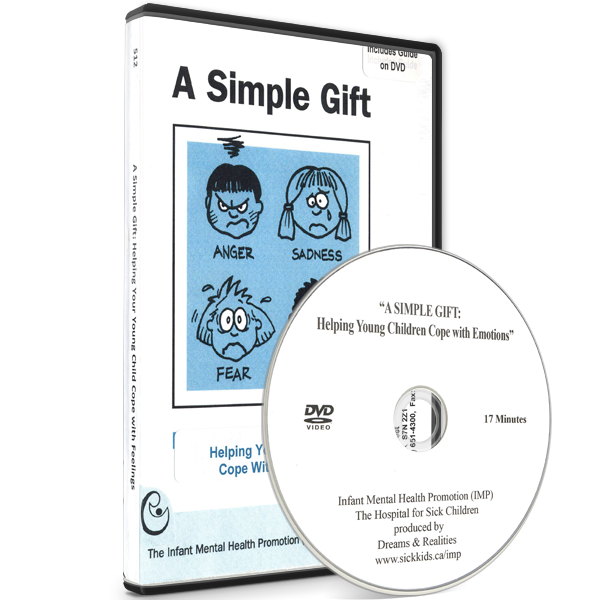
A Simple Gift: Helping Young Children Cope with Emotions
Video, 2000
Negative emotions (anger, sadness, fear, jealousy) and the difficult behaviours that may follow (temper tantrums, whining) are normal in young children. Research has shown that not learning to manage negative emotions in the early years may result in later problems. This videotape suggests how parents can help young children understand their difficult feelings and express these feelings in ways that are socially acceptable. The information is presented in clear language and is suitable for parents from many cultures.
SKU: 5-V-512 -
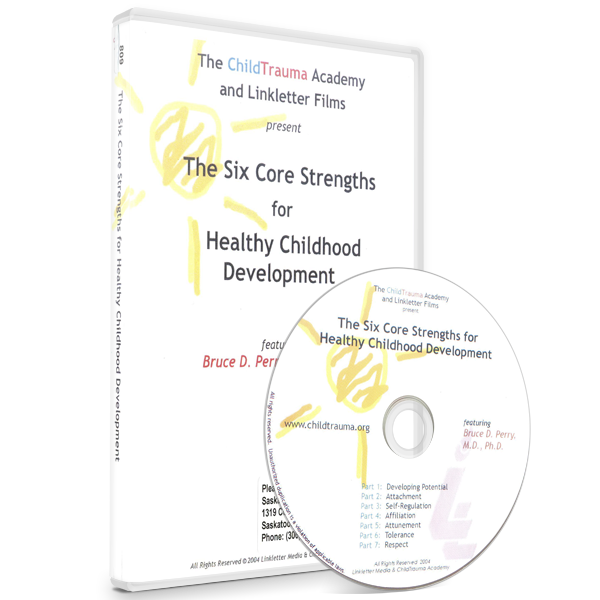
The Six Core Strengths for Healthy Childhood Development
Video, 2004
In this DVD, Dr. Bruce Perry outlines the core strengths that, if developed in early childhood, help children to grow into creative, social, humane, and caring humans. These core strengths are only expressed if a child is given opportunities to develop them. They include attachment, self-regulation, affiliation, attunement, tolerance, and respect.
SKU: 8-V-809 -
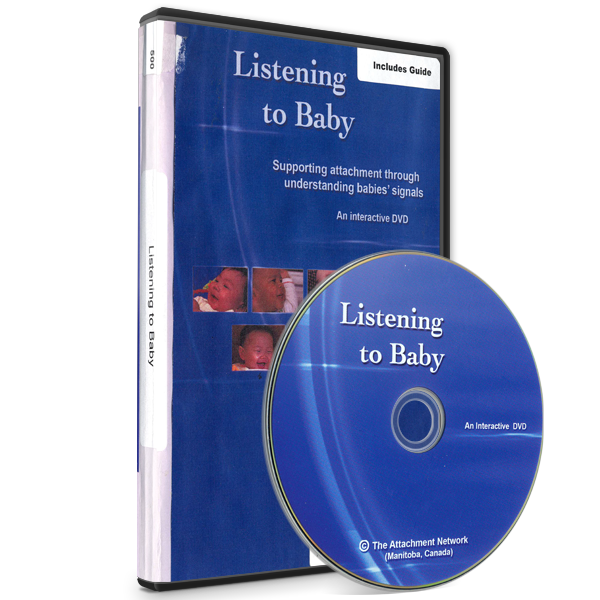
Listening to Baby
Video, 2007
Listening to Baby is an interactive DVD about the importance of supporting attachment by noticing, understanding, and responding with sensitivity to babies’ cues. This DVD is a rich and multifaceted teaching tool developed primarily for a parent audience but with potential to be used in education and other settings. Messages are told mostly in the voices of parents and illustrated by beautiful images of their babies, from 2 weeks to 16 months of age.
SKU: 5-V-500 -
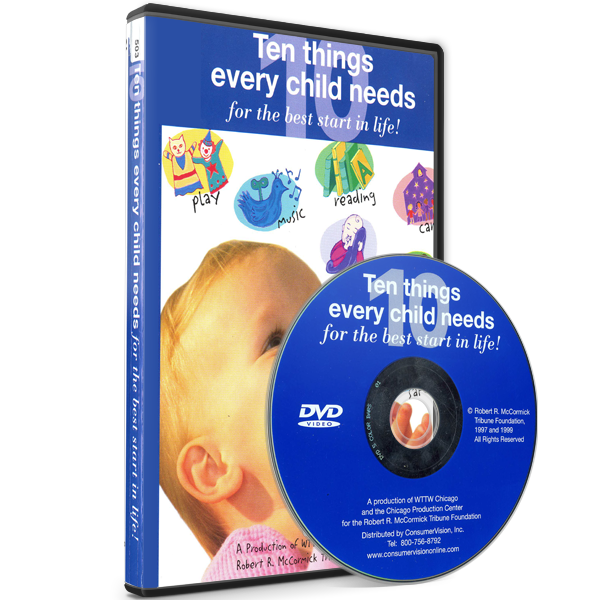
Ten Things Every Child Needs
Video, 1999
Can a child’s IQ be improved during the first years of life? Researchers say yes, if the child receives ten simple things shown to help children’s brains develop.
Ten Things Every Child Needs explains how our earliest interactions influence a child’s brain development. Hosted by popular television personality Tim Reid, Ten Things Every Child Needs is an invaluable guide that parents and caregivers can follow to give a child his or her best start in life.
SKU: 5-V-503
